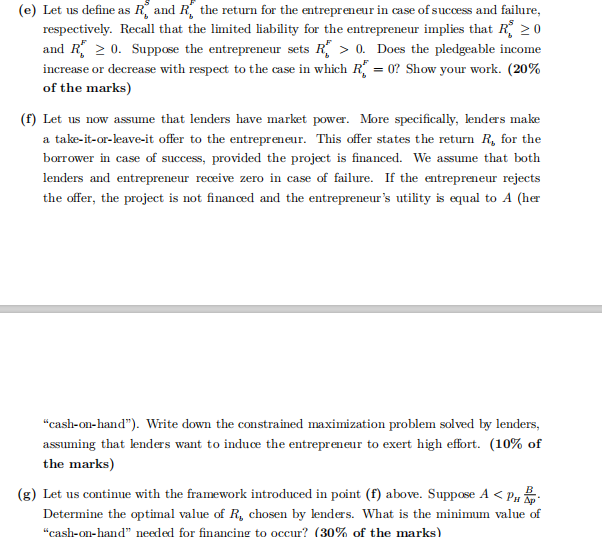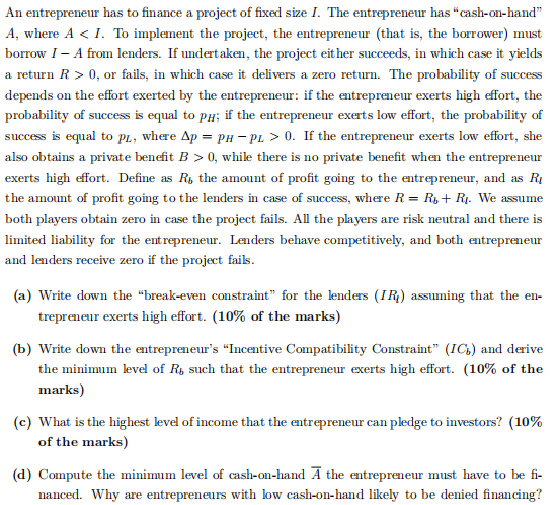(e) Let us define as R, and R, the return for the entrepreneur in case of success and failure, respectively. Recall that the limited liability for the entrepreneur implies that R, 2 0 and R, 2 0. Suppose the entrepreneur sets R, > 0. Does the pledgeable income increase or decrease with respect to the case in which R, = 07 Show your work. (20% of the marks) (f) Let us now assume that lenders have market power. More specifically, lenders make a take-it-or-leave-it offer to the entrepreneur. This offer states the return R, for the borrower in case of success, provided the project is financed. We assume that both lenders and entrepreneur receive zero in case of failure. If the entrepreneur rejects the offer, the project is not financed and the entrepreneur's utility is equal to A (her "cash-on-hand"). Write down the constrained maximization problem solved by lenders, assuming that lenders want to induce the entrepreneur to exert high effort. (10% of the marks) (g) Let us continue with the framework introduced in point (f) above. Suppose A 0, or fails, in which case it delivers a zero return. The probability of success depends on the effort exerted by the entrepreneur: if the entrepreneur exerts high effort, the probability of success is equal to py; if the entrepreneur exerts low effort, the probability of success is equal to pi, where Ap = p# -PL > 0. If the entrepreneur exerts low effort, she also obtains a private benefit B > 0, while there is no private benefit when the entrepreneur exerts high effort. Define as Ro the amount of profit going to the entrepreneur, and as Ry the amount of profit going to the lenders in case of success, where R = Ry + R. We assume both players obtain zero in case the project fails. All the players are risk neutral and there is limited liability for the entrepreneur. Lenders behave competitively, and both entrepreneur and lenders receive zero if the project fails. (a) Write down the "break-even constraint" for the lenders (IR) assuming that the en- trepreneur exerts high effort. (10% of the marks) (b) Write down the entrepreneur's "Incentive Compatibility Constraint" (IC) and derive the minimum level of At such that the entrepreneur exerts high effort. (10% of the marks) (c) What is the highest level of income that the entrepreneur can pledge to investors? (10% of the marks) (d) Compute the minimum level of cash-on-hand A the entrepreneur must have to be fi- nanced. Why are entrepreneurs with low cash-on-hand likely to be denied financing








